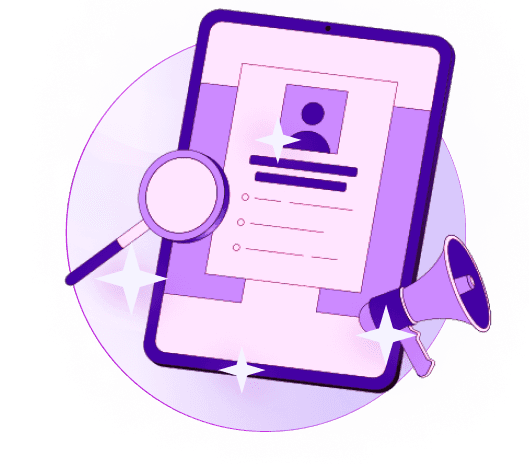Blogs
Articles

How to Master Data Enrichment and Analysis Management: A Practical Guide
A surprising 83% of consumers show more loyalty to companies that provide customized experiences.
The numbers tell an interesting story. Only 48% of consumers say they get "good" or "excellent" personalization from brands. This gap shows why Data Enrichment and Analysis Management matter so much for today's businesses.
This piece covers everything about data enrichment - from simple definitions to advanced implementation strategies. You'll get the tools to boost data quality, improve your marketing approach, monitor user behavior changes, strengthen security measures, and make analytical business decisions.
What is data enrichment?
Data enrichment is the foundation of modern data strategy. Raw data becomes more useful, accurate, and rich when external information merges with your existing database.
Data enrichment goes beyond simple data collection. It turns simple information into a strategic asset that powers business intelligence. This process aims to make your current data more complete, accurate, and useful. The process also standardizes formats and adds valuable context that makes datasets more useful by a lot.
Three simple mechanisms power data enrichment:
Verification - Your data stays current and accurate as customer information changes naturally over time
Supplementation - Missing or complementary information builds more complete profiles
Integration - Data from different sources combines into detailed datasets
This process never really ends. Customer data evolves constantly, so regular enrichment keeps everything accurate and reliable.
Data enrichment helps optimize marketing initiatives and boost sales outcomes when done right. You can create customized experiences and make smarter business decisions by really understanding your customer's priorities, behaviors, and needs.
Enriched data gives you deeper context to analyze, make decisions, and connect with customers. It transforms scattered data points into a valuable business resource that works.
The Importance of Data Analysis Management
Data analysis management is the life-blood of smart decision-making. Companies can increase conversion rates by 12% when they utilize enriched firmographic data. Well-managed data analysis helps create targeted marketing strategies that cut acquisition costs by 50%.
Demographic enrichment
Your existing data becomes more valuable with demographic enrichment that adds socio-economic details such as age, gender, income, education, and cultural background. This extra information helps segment audiences accurately. Marketing teams can then create campaigns that appeal to specific customer groups.
Firmographic enrichment
B2B companies need firmographic enrichment to add organizational details like industry type, company size, revenue estimates, and business performance metrics. Sales teams can then prioritize valuable prospects based on growth indicators or funding status. This approach optimizes lead scoring and makes outreach more effective.
Behavioral and transactional data
Customer interactions, participation levels, and online activity fall under behavioral data. Transactional data shows purchasing patterns, payment methods, and frequency. These two data types work together to show how customers interact with your business. Companies can then offer customized recommendations that match individual priorities.
Customer profile enrichment examples
Real-world applications include adding job roles and social profiles to contact records. Companies can standardize business names to avoid duplicate accounts and boost customer segmentation for targeted marketing campaigns. Simple customer details evolve into detailed profiles that build meaningful business relationships.
Data Enrichment and Data Cleansing
Organizations often confuse data cleansing and data enrichment, but these processes serve different purposes in your data management strategy.
Data cleansing focuses on making data accurate by fixing errors, eliminating duplicates, and resolving inconsistencies. This process—also called data scrubbing—builds reliable information foundations before any enhancement starts. The US economy loses approximately $3.10 trillion annually due to poor quality data, which makes cleansing essential.
Data enrichment boosts clean data by adding valuable extra information from external sources. Your dataset becomes richer with deeper context that turns raw data into detailed customer profiles or business insights.
These processes must follow a specific order—cleansing comes before enrichment. Picture cleansing as preparing the canvas and enrichment as adding color and dimension. Enrichment efforts might magnify existing errors instead of creating value without clean data.
Clean data needs standardized formats and removal of obsolete entries, while enrichment adds demographic details, firmographic information, and behavioral patterns. Data cleansing improves quality, and enrichment boosts its depth and usefulness.
Both processes work together and create a healthy database that supports informed decisions across your organization.
Types of Data Enrichment
Data enrichment comes in several specialized forms that serve different business goals in your data analysis strategy.
Demographic enrichment boosts customer profiles with socio-economic details like age, gender, income, education, and marital status. This information helps create precise audience segments for targeted marketing campaigns.
Firmographic enrichment looks at an organization's characteristics such as size, industry type, revenue estimates, and business performance. These details help B2B companies create Ideal Customer Profiles and find the right sales targets.
Geographic enrichment adds location-specific data like country, city, state, region, and postal codes. The spatial aspect helps analyze regional trends, find new market opportunities, and optimize delivery routes.
Behavioral enrichment tracks customer interactions, buying habits, engagement levels, and website activity. These insights help you understand customer needs and reach prospects at the best times in their buying experience.
Technographic enrichment includes technology-related data about software, hardware, cloud services, and IT infrastructure. This information is a great way to get insights for B2B technology companies targeting specific technology users.
Psychographic enrichment looks at lifestyle attributes, values, interests, attitudes, and personality traits. Going beyond simple demographics, these insights help create marketing that connects emotionally with customers.
Understanding these different enrichment types helps you pick the right approach for your business needs and data strategy goals.
Step-by-Step Guide to Enrich and Manage Data
Data Enrichment and Analysis Management needs a systematic approach. These essential steps will help you turn raw data into practical insights.
Analyze your current data quality
Your first task is to perform a detailed data audit that shows your data's current state. Look for inconsistencies, duplicates, and missing values in any discipline. Set baseline metrics for completeness, accuracy, and timeliness to track progress. Research shows 95% of organizations suffer from poor data quality, which wastes resources.
Identify internal and external data sources
After assessing your database, figure out what additional information could help your organization. Search for sources that line up with your enrichment goals, whether demographic, behavioral, or firmographic data. Document their formats, update frequencies, and integration points.
Clean your data before enrichment
Clean your data by removing duplicates, fixing errors, and standardizing formats before enrichment. Bad data creates incorrect analytics and hurts decision-making. This crucial step will give a smooth merger of new data with existing information.
Automate enrichment with tools
Automated processes help maintain clean data continuously. Use AI and machine learning capabilities to handle large volumes of data quickly. Human oversight remains crucial even with automation's capabilities.
Integrate enriched data into your systems
Make enriched data available in your business systems for everyone who needs it. To get more advanced tools and deeper insights, visit our platform to begin your data enrichment trip.
Benefits of Data Enrichment in Decision-Making
Data enrichment proves its worth in how it shapes decision-making processes. Companies that utilize enriched data see significant advantages in their business operations.
Improved customer segmentation
Enriched data helps create precise audience segments based on multiple dimensions rather than broad categories. Companies segment their customers by purchase history, interests, and demographic information. This targeted approach has helped brands achieve revenue increases up to 2.9x when they use first-party data in their marketing strategies.
Better marketing personalization
Customer data enrichment creates customized experiences that strike a chord with individual priorities. Marketing personalization boosts engagement rates up to 20%. The data shows 63% of customers now expect personalization as a standard service. This customization builds stronger relationships and brings customers back.
Enhanced predictive analytics
Enriched data adds more variables to predictive models and makes them more accurate and reliable. The expanded context reveals hidden opportunities and risks in raw data. These insights help businesses predict customer needs and stay ahead of their competition.
Stronger security and fraud detection
Data enrichment serves as a vital component in fraud prevention by offering a complete view of transactions. The U.S. Treasury Department prevented and recovered over $4 billion in fraud through evidence-based methods. Rich payment data helps spot suspicious patterns quickly and stops fraud before it happens.
Monitoring Changes in User Behavior and Market Trends
Data enrichment is a continuous process, not a one-time task. Business environments change constantly, and data must adapt to stay relevant. Companies need regular data audits to check the accuracy, completeness, and timeliness of enriched information. These audits help identify areas that need updates based on new market conditions.
Continuous enrichment lets you monitor user behavior and market trends effectively. Your database will reflect every change and help analyze business effects and the work to be done. Current data gives you a vital competitive edge because you can spot and react to trends before your competitors do.
The data enrichment field shows several important market trends:
Organizations of all sizes need evidence-based decision making
AI integration provides smarter, more accurate data improvements
Growth of real-time data enrichment plays a significant role in dynamic sectors like e-commerce and finance
Behavioral data enrichment reveals customer purchasing patterns and helps make smart decisions based on their interests. Organizations stay relevant during market changes by uncovering emerging trends through deeper insights.
Enriched data shows how customers make decisions at key moments, revealing important factors that influence their choices. Companies can improve their services proactively by spotting customer pain points through support tickets or behavioral analysis while tracking market changes continuously.
How To Get Started With Data Enrichment and Analysis Management
Want to begin your data enrichment experience? You can get started easily by doing this and being organized.
Your first step is to get a full picture of your current database. Look at the data types you collect and spot any obvious gaps. This assessment will guide you through the enrichment process.
The next step involves deciding what extra data would help your business goals. You should rank your needs based on how they'll affect your business and how easy they are to get.
Finding the right data sources comes next. Public databases, social media platforms, or third-party providers could be good options. Make sure these sources provide reliable, relevant information that matches your enrichment goals.
Clean your existing data before integration. Remove duplicates, fix errors, and arrange formats properly. This vital step keeps bad data from ruining your enrichment process.
Automation tools make enrichment smoother. Manual processes don't work well and often lead to mistakes. You can check our platform to find automated solutions that make this process easier.
Conclusion
Data enrichment is the life-blood of modern business intelligence that turns simple information into valuable assets to power strategic decisions. This piece explores how enriched data helps improve everything from customer segmentation to fraud detection. It ended up creating customized experiences that build loyalty and trust.
Quality assessment and thorough cleansing form the foundation of effective data enrichment. Your current database needs proper analysis before new information can be added. The right enrichment types—demographic, firmographic, or behavioral—should align with your specific business goals.
Companies skilled at data enrichment secure most important competitive advantages. Businesses that use enriched data react to market trends faster. They customize customer experiences better and make more accurate predictions. The process needs continuous attention since customer behavior and market conditions keep changing.
The road to data enrichment might look daunting initially. A well-laid-out approach in this piece will make your experience easier. You should start small and concentrate on areas with maximum effect. Your enrichment strategy can grow as you see concrete results. Without doubt, proper data enrichment rewards you with better decision-making across your organization.
Your data enrichment experience should start today. Successful businesses differ from average ones based on their data's quality and its effective use. Enriched data helps you build stronger customer relationships. It lets you spot new opportunities and powers sustainable business growth.
FAQ
Our readers asked numerous questions about data enrichment. Here's a straightforward FAQ guide that explains everything.
What is data enrichment?
Data enrichment enhances existing data by adding supplementary information from external sources to create a more detailed and accurate dataset.
Why is data enrichment important?
Better decision-making and customer participation stem from data enrichment that fills gaps and corrects inaccuracies. Your data deteriorates by 20-30% each year as people change jobs, get promoted, and relocate.
Is data enrichment a one-time process?
No. You need to perform data enrichment based on how your data changes - usually quarterly or yearly.
How can companies measure enrichment success?
Companies can track their success through better participation rates, higher conversions, increased customer retention, and smarter business decisions that come from informed data.
What challenges might businesses face?
Businesses struggle with data accuracy from external sources, integration of enriched data into existing systems, and data privacy compliance. A contact's information must be deleted when they ask to be removed from the commercial dataset, unless there's an independent legal basis to keep it.

Create Your Free Persana Account Today
Join 5000+ GTM leaders who are using Persana for their outbound needs.
How Persana increases your sales results
One of the most effective ways to ensure sales cycle consistency is by using AI-driven automation. A solution like Persana, and its AI SDR - Nia, helps you streamline significant parts of your sales process, including prospecting, outreach personalization, and follow-up.



